Baraboo Hills
July 1981 marked the start of my serious work as a landscape photographer. On a humid summer afternoon, I visited Pine Hollow, a property of The Nature Conservancy in the rural countryside near Baraboo, Wisconsin. Poorly marked and nearly inaccessible at the time – a secret place – I was led there by a friend who lived in the area and discovered it. The hollow was a surprising destination, reached by a trek along the edge of private property to a barely discernible trail with an occasional tree tagged with the diamond-shaped Nature Conservancy logo.
As I worked my way down-slope from uplands heavily forested with oaks and pines, the air became cool and invigorating. The shady narrow gorge of the hollow was enclosed on three sides by mossy, fern-covered walls up to 80 feet tall. A meandering rubble-bedded stream gurgled through the hollow; where it pooled, it mirrored the sky. The light captured and held in this space had a magical quality. Birch with golden peeling bark glowed against the cool blue-green tint of the walls. Wispy groves of Hemlock that only grow in shady damp environments bowed over the stream.
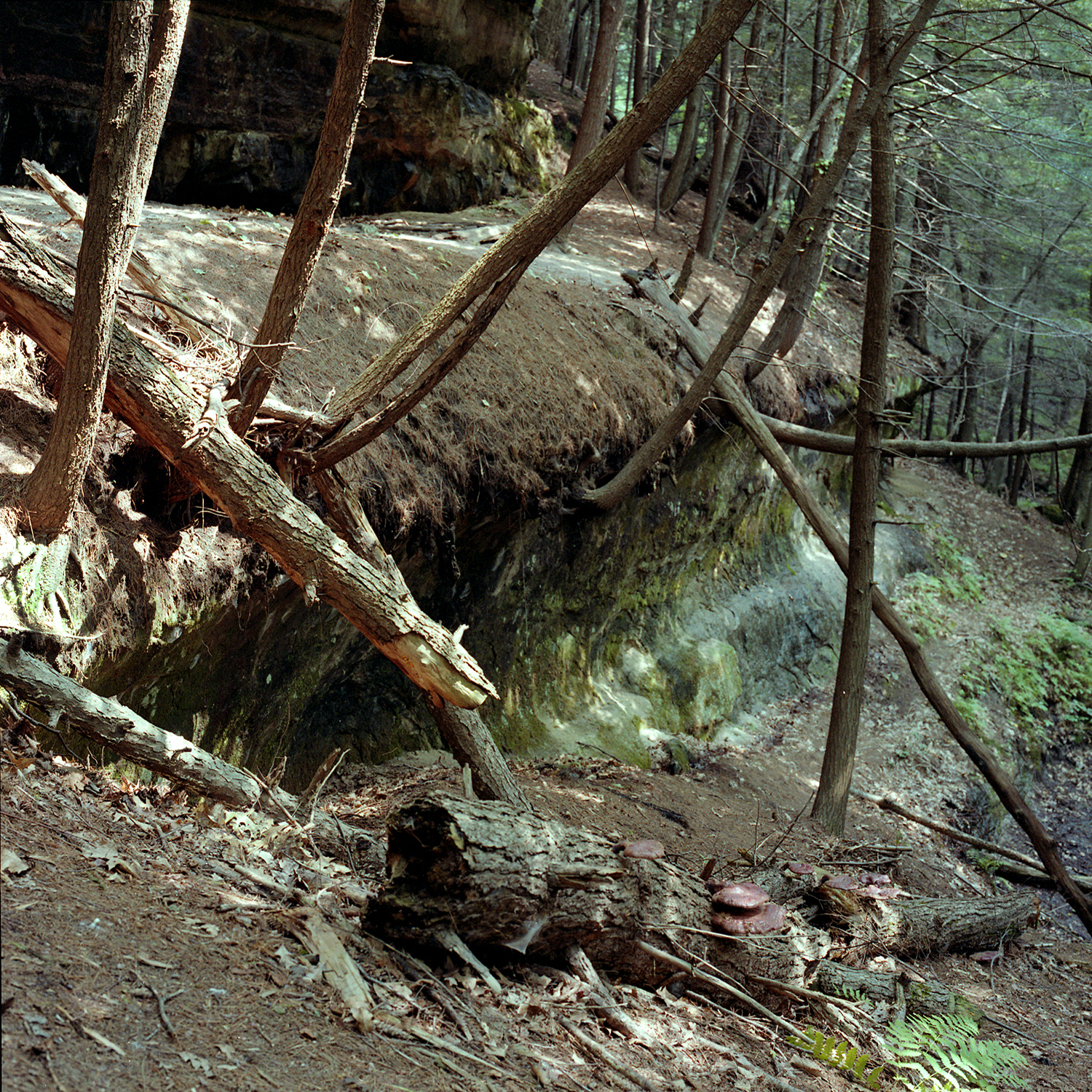
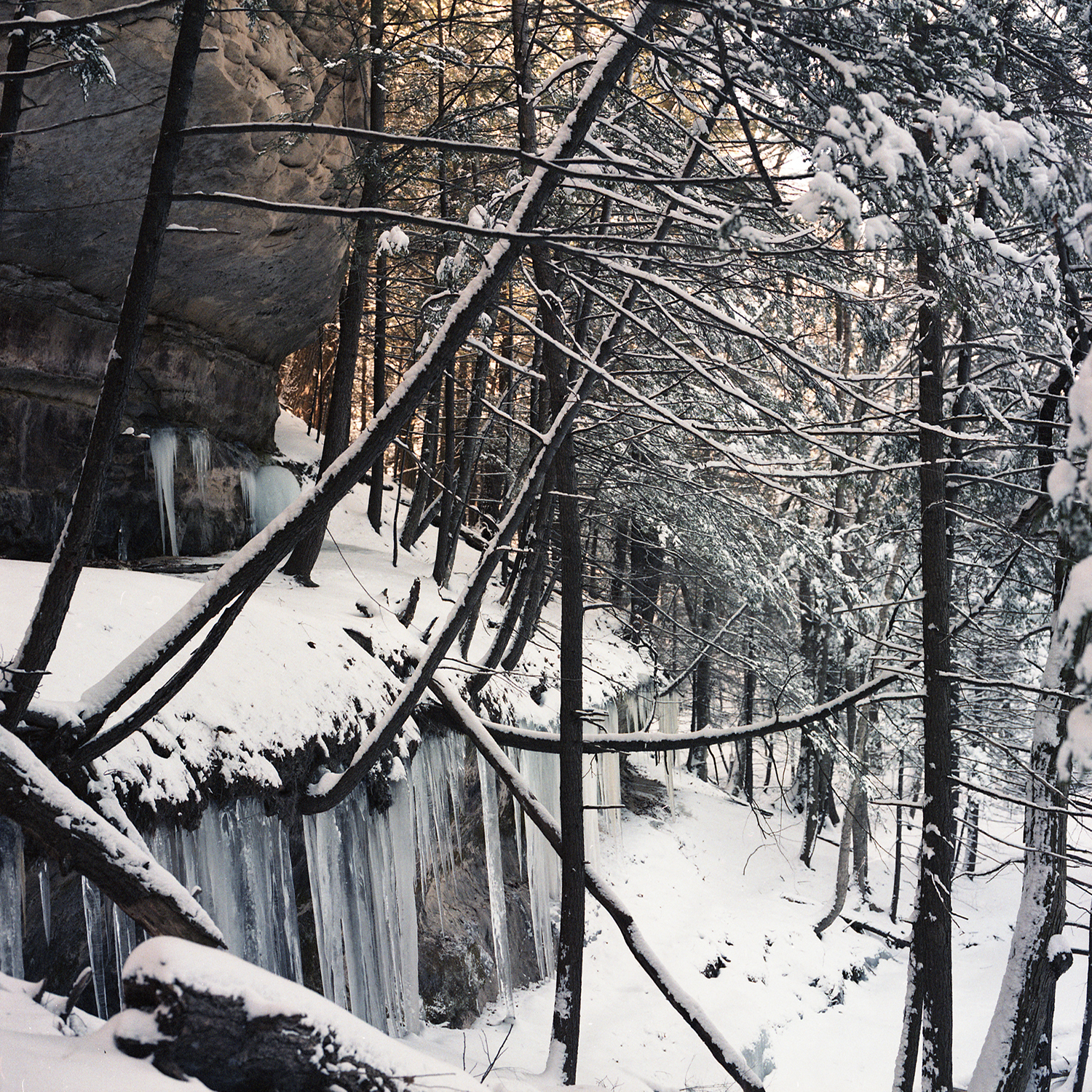
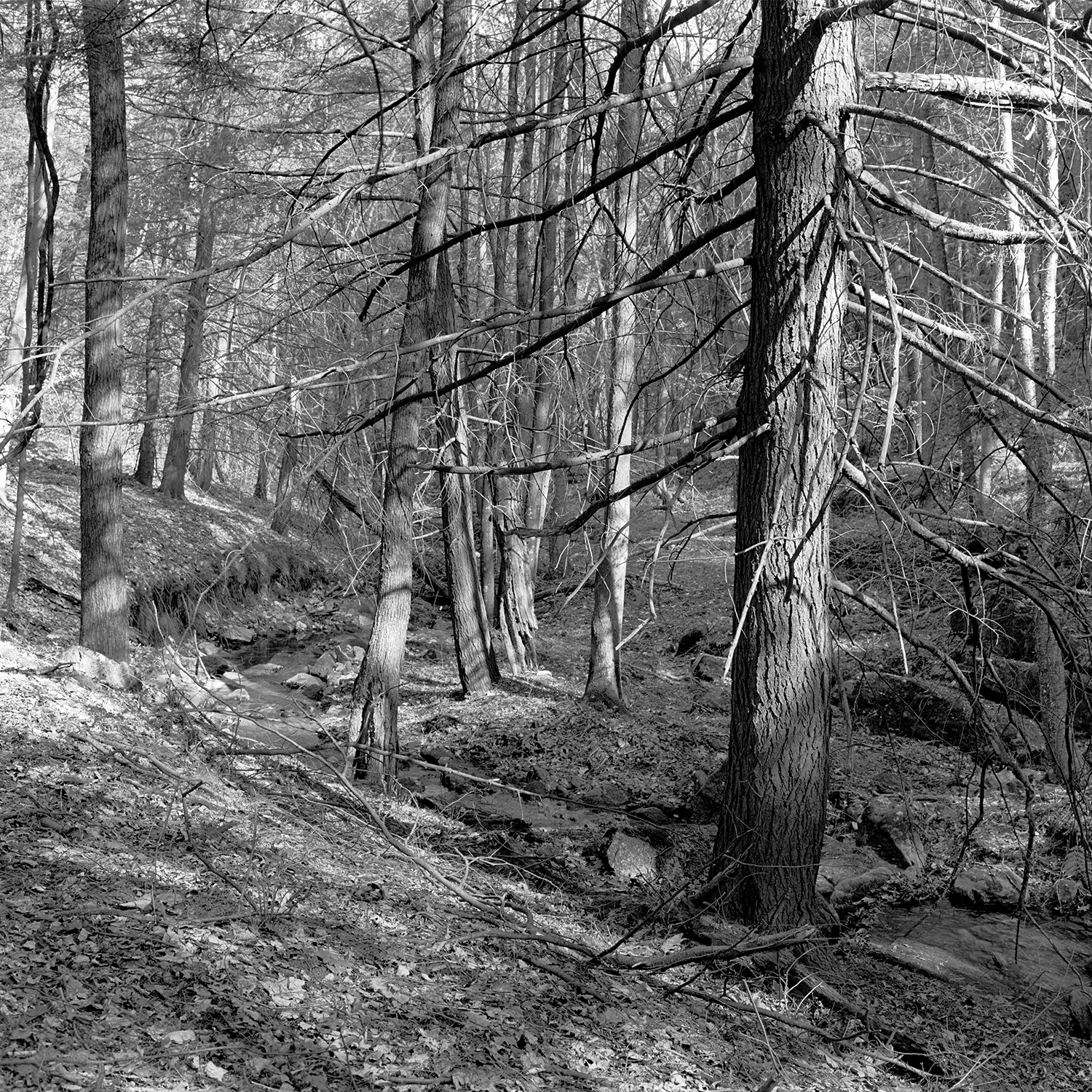
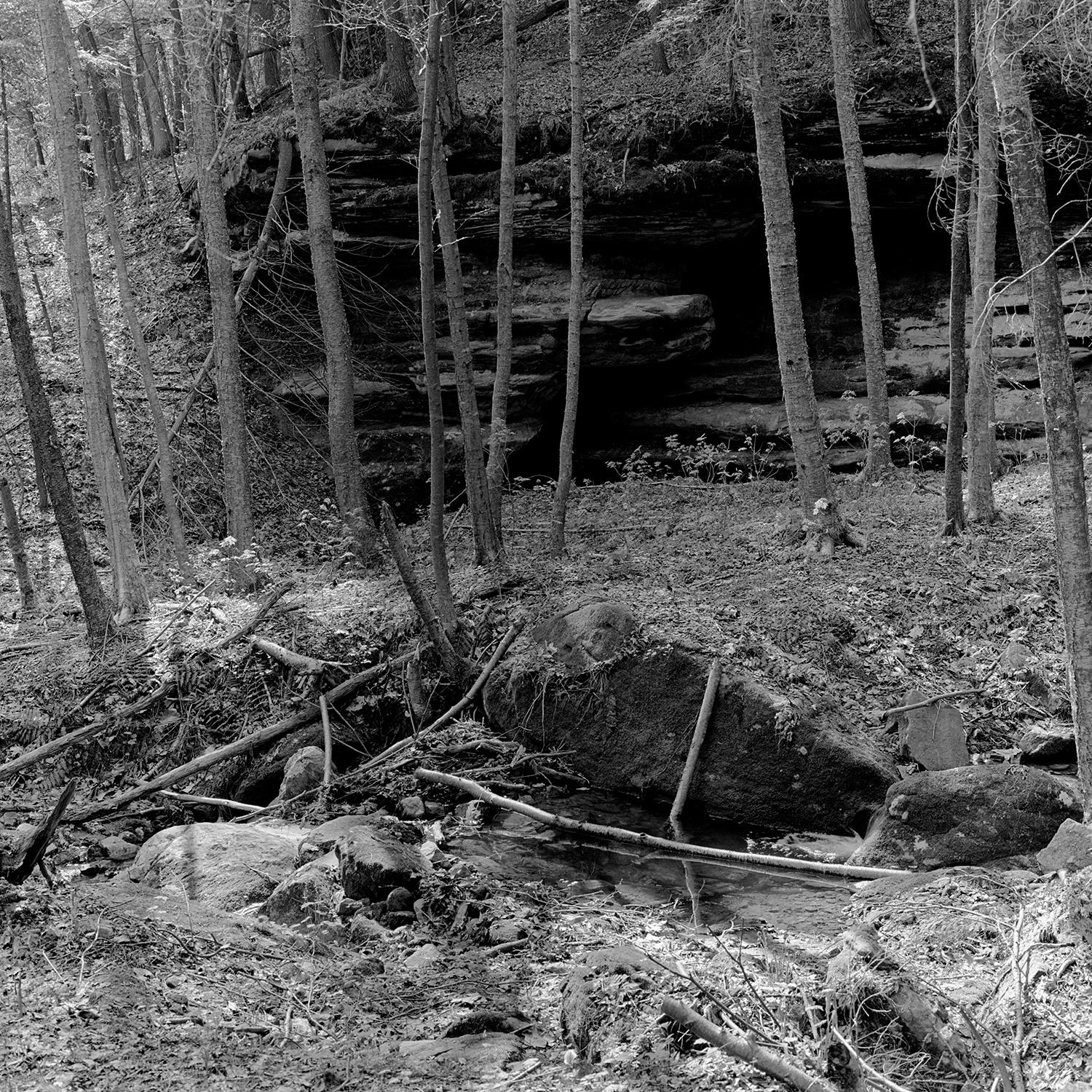
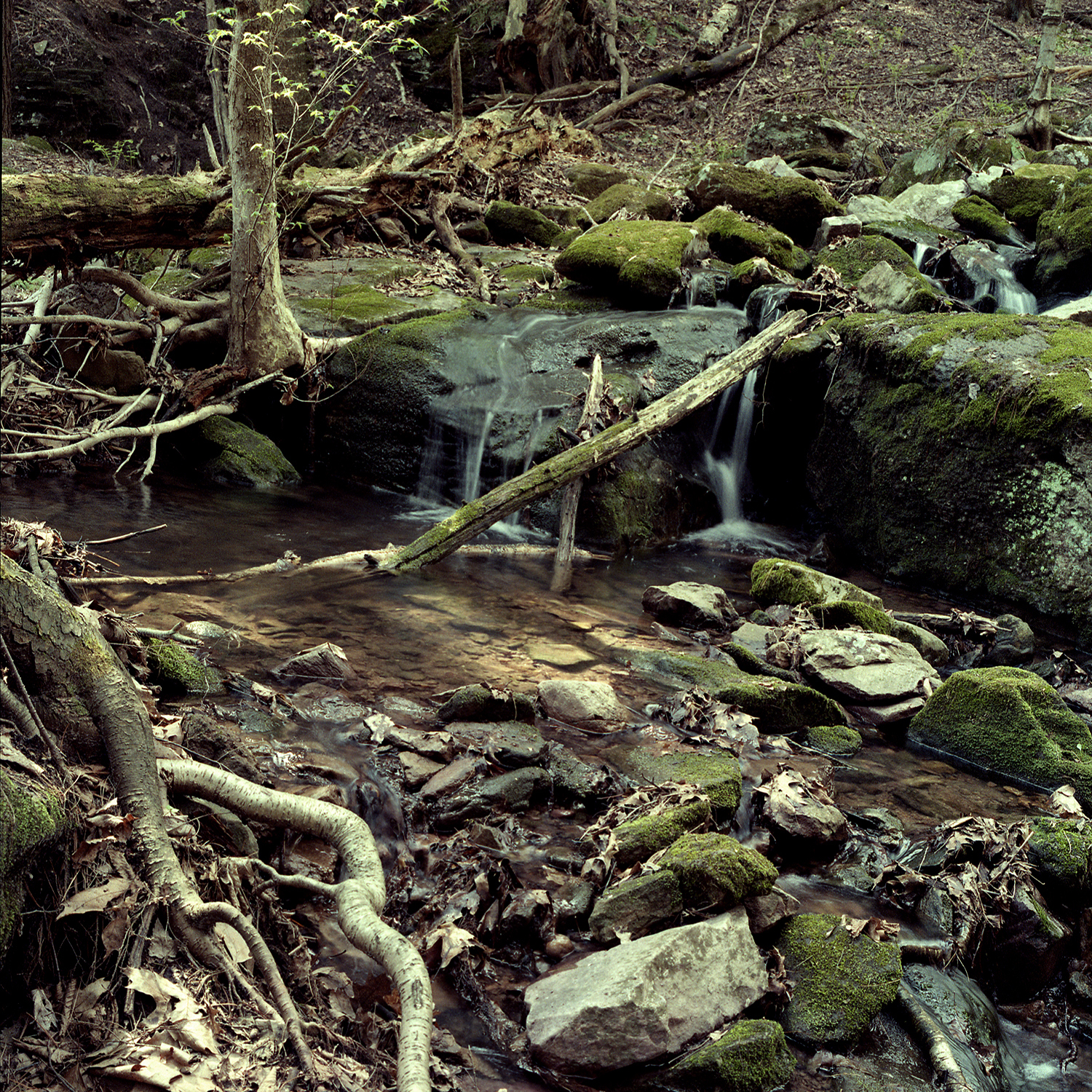
During my initial visit, I hand-held my Hasselblad medium-format camera. The first images have a blurry, shallow depth-of-field because the hollow is very shady and I had to open the aperture wide. After that visit, I used a tripod to hold my camera steady and more carefully compose the images, and to enable a slower shutter speed and therefore, greater depth-of-field and clarity.
Over the next six years, I visited the hollow in all seasons. In 1988, I moved from Madison, Wisconsin where I had been living, to Saint Paul, Minnesota. I did not return to Pine Hollow again until 2011 – 24 years later.
I had been documenting selected landscapes over time, and Pine Hollow lured me back. I vaguely remembered its location. Online research revealed that The Nature Conservancy mapped the area and identified a small parking lot and access point. On a sunny October day, I anxiously set out for a two-day trip to re-visit Pine Hollow, unaware of what might be revealed.
The trail accessed the hollow from an unfamiliar location; I recognized none of the landmarks, and again, it was very poorly marked. Apparently people are not encouraged to visit here because of the fragility of this ecosystem. I went north over-land in the general direction of the gorge which runs northwest to southeast, knowing that I’d run into it at some point. When going off-trail, I affix florescent vinyl ties to trees as markers and this is how I arrived in the hollow – at an its mid-point. Sweating, I sat on a boulder to rest and look around.
Nothing was recognizable. It was an emotional moment. I wriggled out of my backpack and left my gear on the rock to walk around and get my bearings. Clearly a significant weather event had devastated the hollow and I later learned that beginning in the late 1980s, flooding rains combined with high winds often swept through the hills. Downed trees blocked my passage through the gorge which was now open to the sunlight. Where were the Hemlocks and the Golden birch? I felt like my past had been erased.
How do I make pictures here? Where are the pictures? I didn’t know, but I had to start; so I did my best. I started. On this trip, I struggled to make a few frames, beginning to rediscover Pine Hollow, and vowed to return.
Since 2011, I’ve made three trips back to Pine Hollow. I now use a field view camera that makes 4" x 5" negatives and I photograph primarily in black-and-white rather than color. I’ve expanded my scope to include two other nearby preserves owned by The Nature Conservancy: Hemlock Draw and Baxter’s Hollow; and Parfrey's Glen, a state Scientific and Natural Area. All four locations are in the Baraboo Hills and the Driftless Area. Glaciers bumped up against these hills composed of quartzite around 15,000 years ago and when the ice melted, torrents of water scoured out narrow valleys. The dramatic hollows and draws with outcrops of quartzite and sandstone are the result of wind and water erosion. Because of the topography and soils, there are micro-climates where unique and rare plants grow, especially in Pine Hollow.
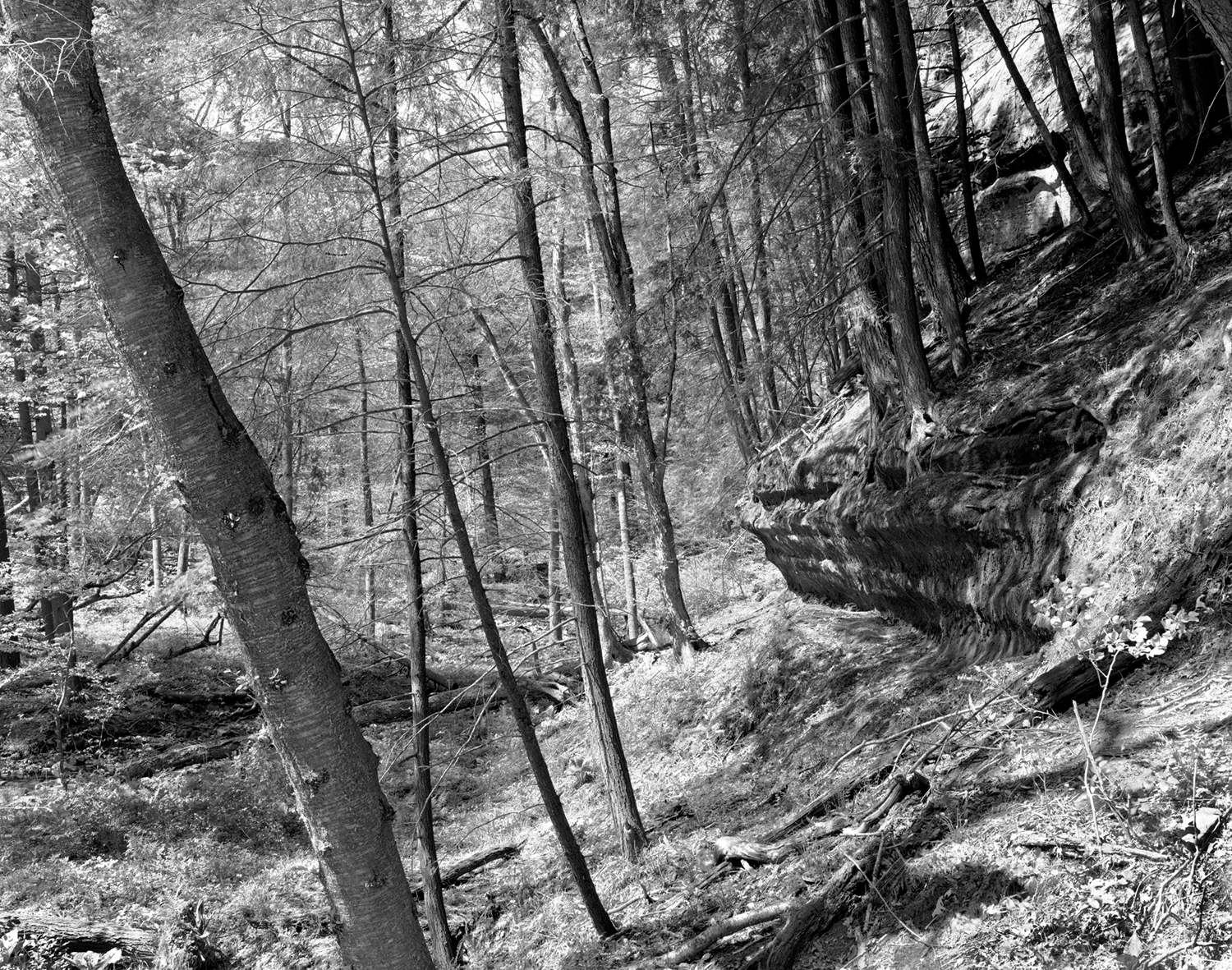

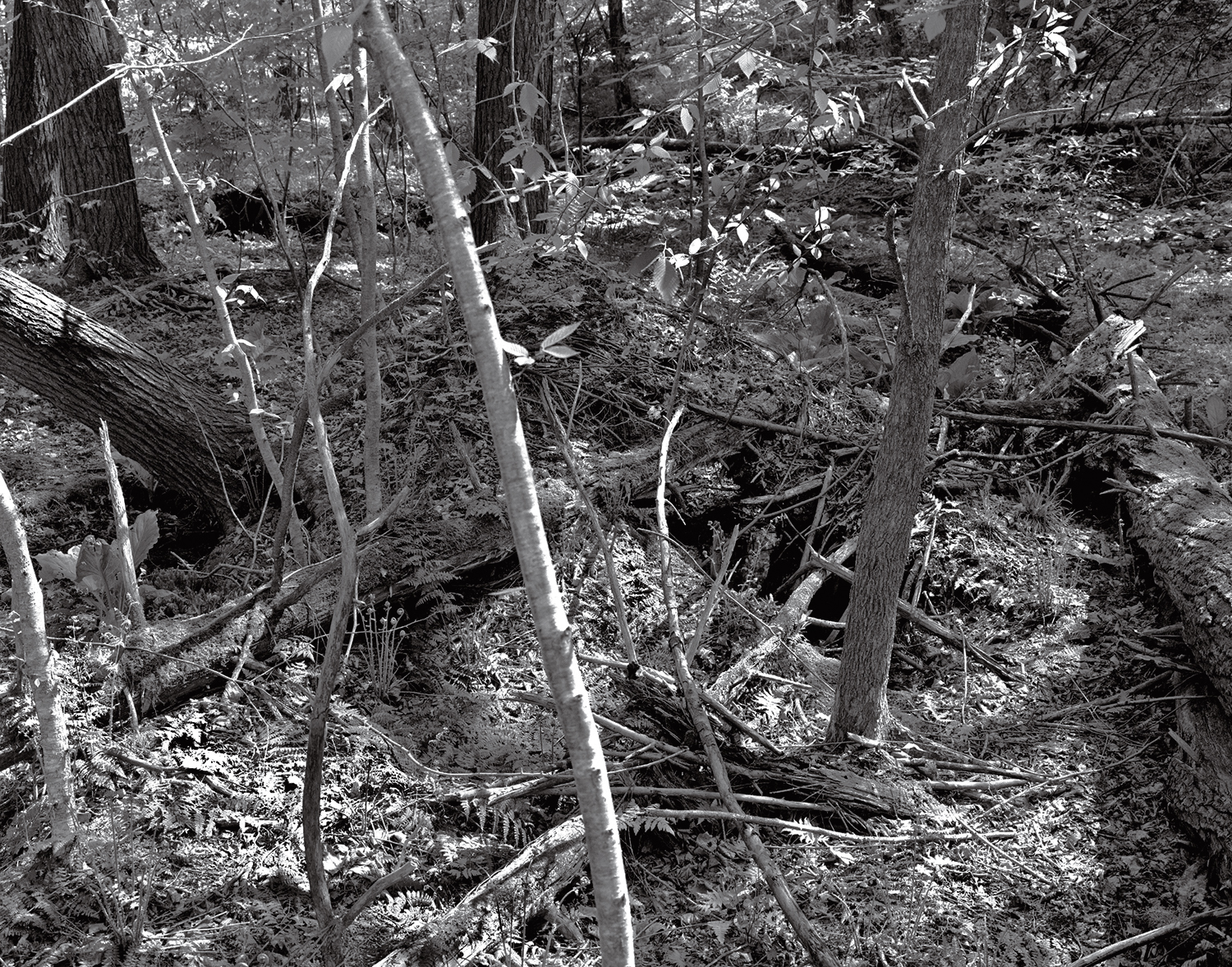
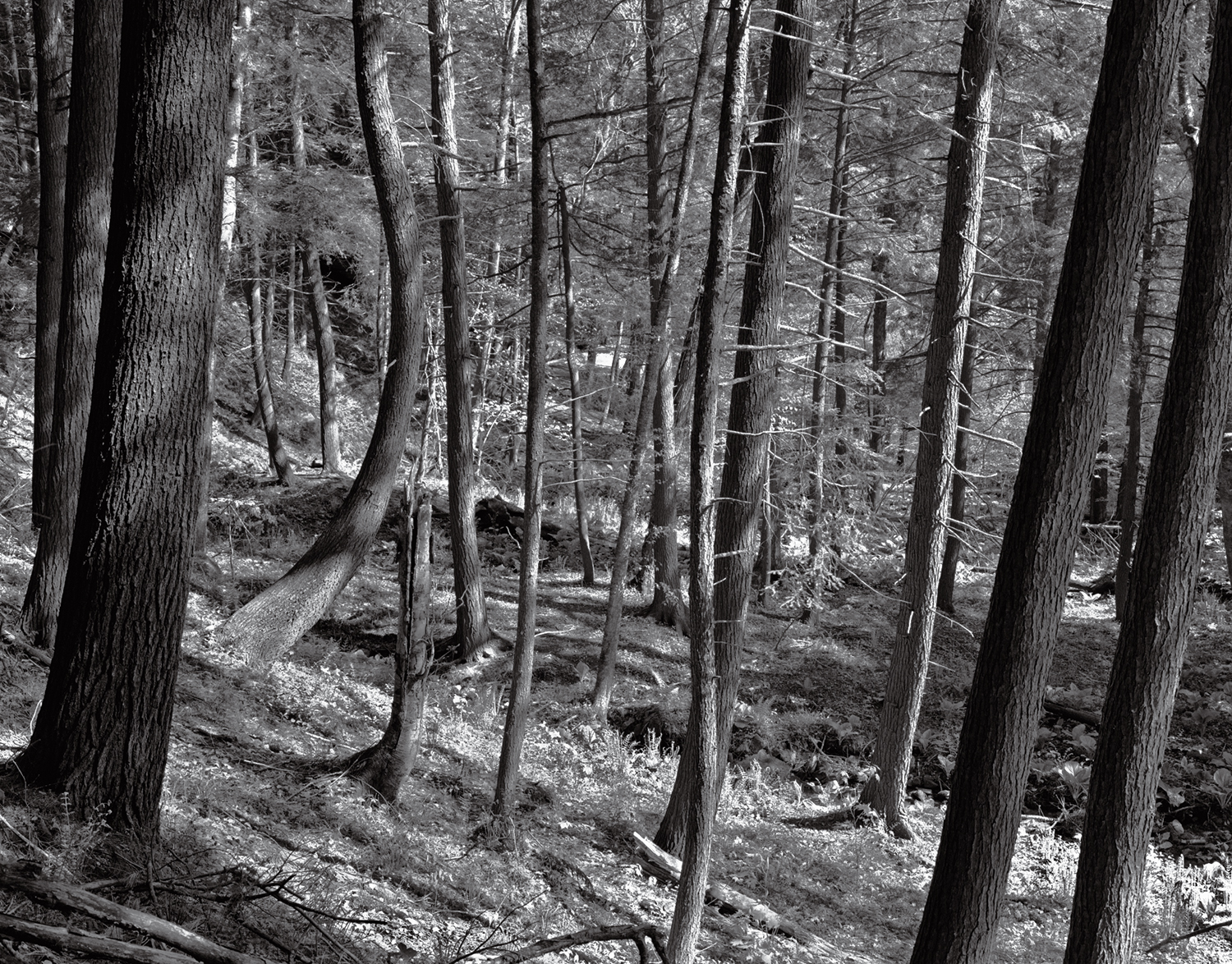
Hemlock Draw, on the other side of a ridge line from Pine Hollow, has a more intact landscape, very similar to what Pine Hollow once was. Memories came flooding back and I felt the narrative about these landscapes begin to take shape. The story is about environmental change and landscape transition, but also resilience, even in this very short span of geological time – my life time.
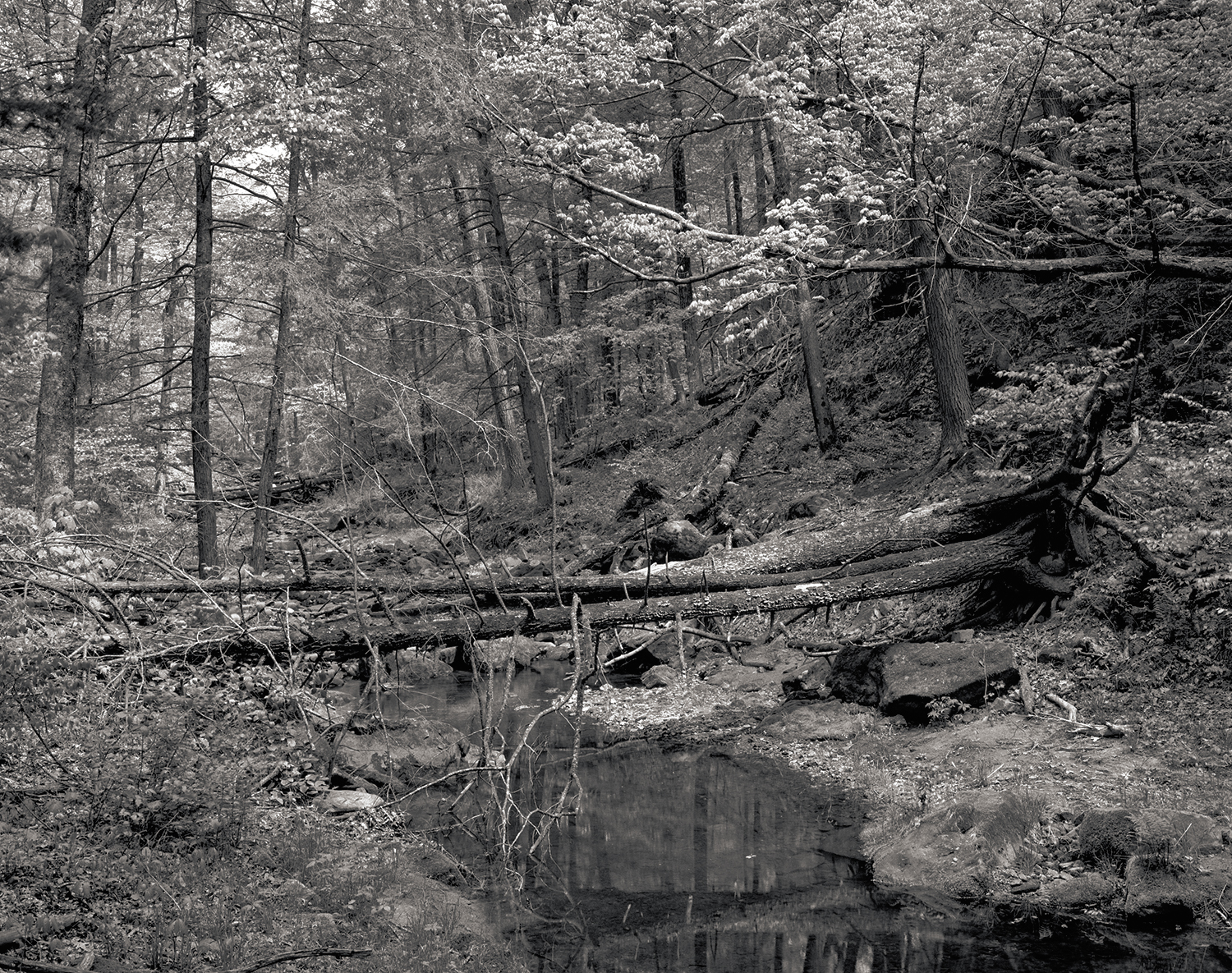

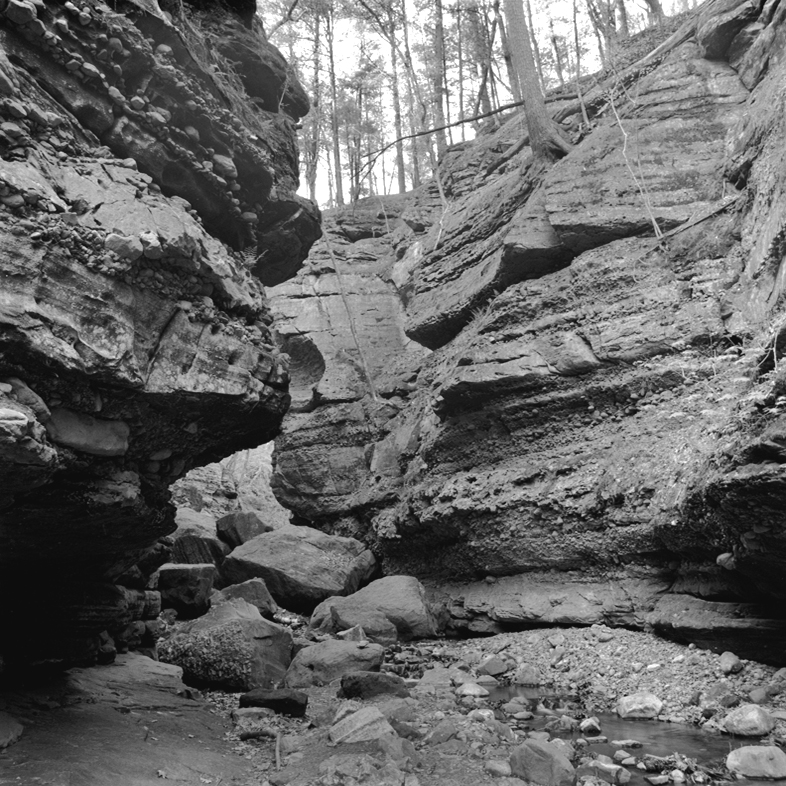
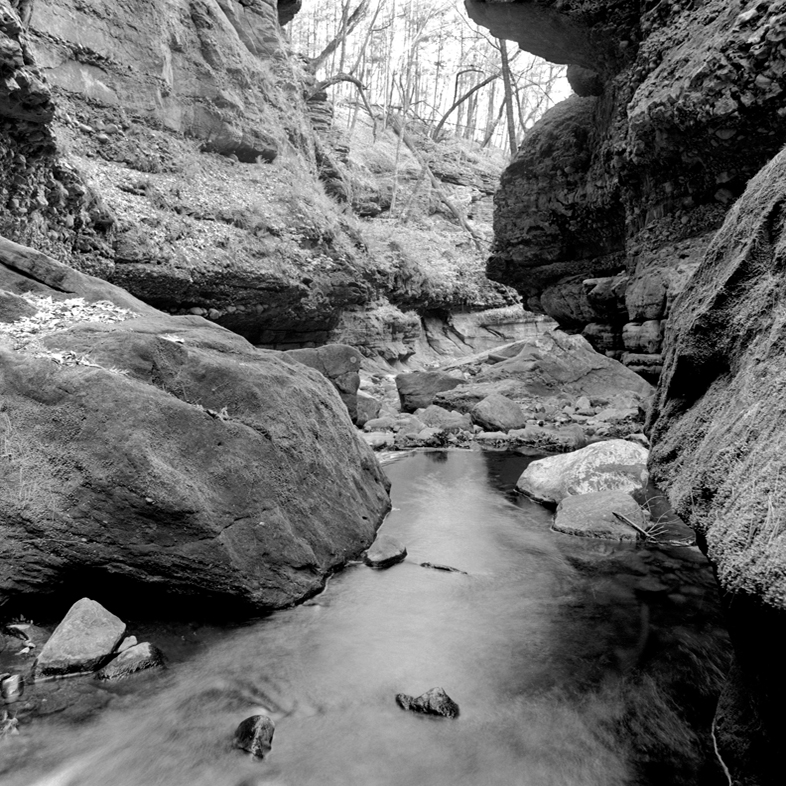
During my visit to Pine Hollow in October 2016, I spent more time exploring and discovered a grove of Golden birch on a hillside. I also climbed out of the gorge to the bench at the base of one of the sandstone bluffs and found a view that I’d photographed in 1983. Over three visits, the much-changed Pine Hollow is once again becoming familiar.

